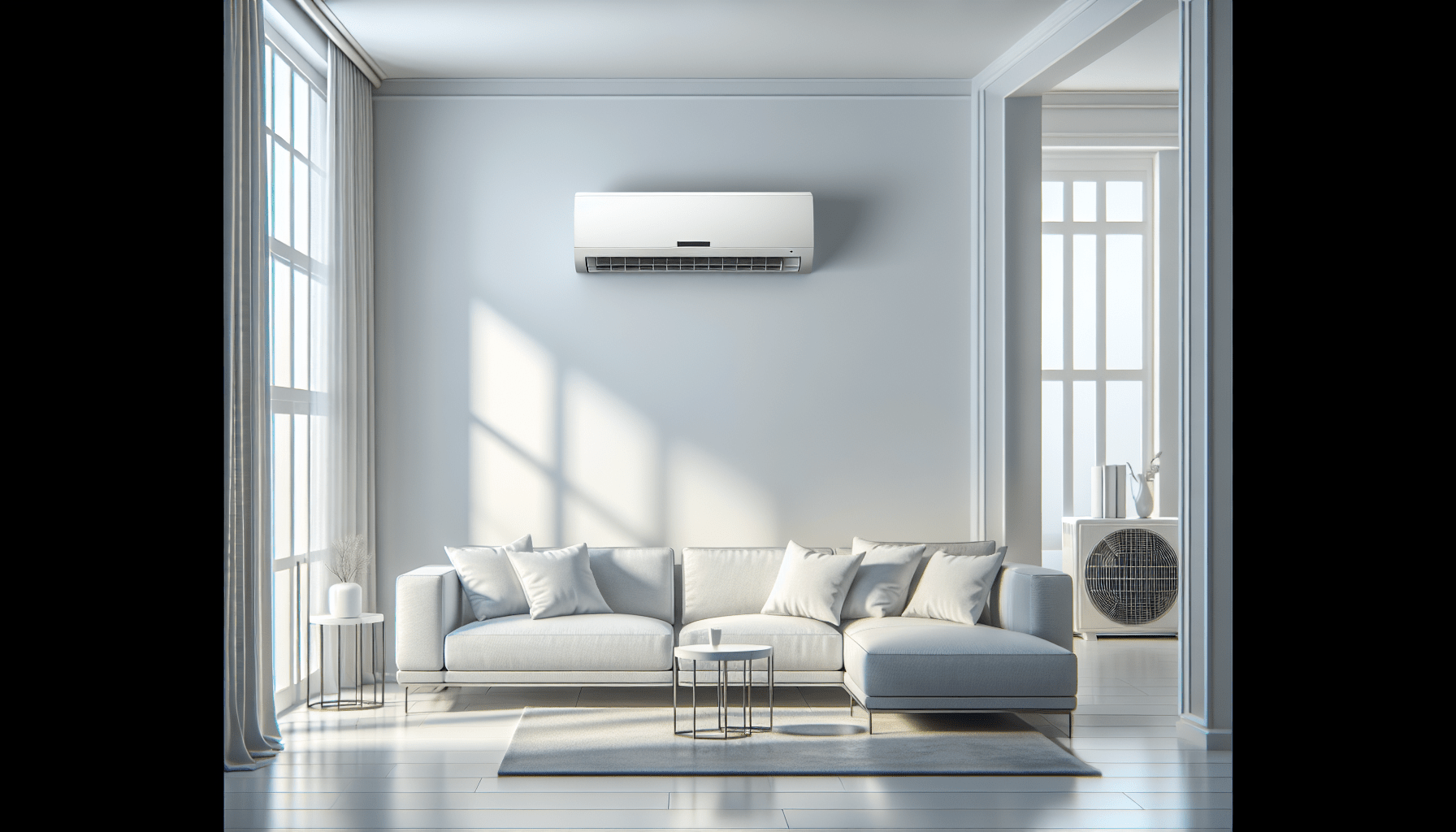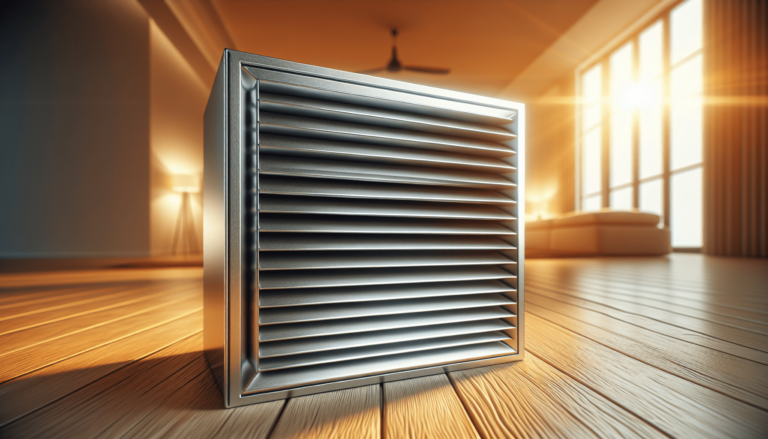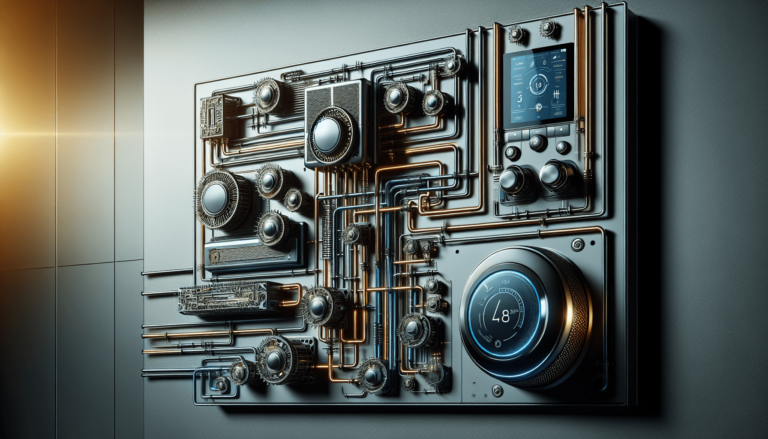

HVAC Services
Get Professional Repairs From The Area's Trusted HVAC Technicians. Ask About Our Services! We Offer Professional Heating & Cooling System Repairs And Guarantee Long-Lasting Results.
Got Question? Call us: (850) 678-2665Financing
Ductless Mini-Split Systems: An Overview
Discover the ins and outs of ductless mini-split systems—energy-efficient, easy to install, and perfect for zoned comfort, especially if traditional HVAC isn’t your thing.

Is your home feeling too hot in the summer and too cold in the winter, but you’re hesitant about installing traditional HVAC systems? You might find a ductless mini-split system an appealing alternative. Think of these as the sophisticated, quiet members of the HVAC family, the ones who wouldn’t bother you with that awkward small talk and get straight to the point—comfort!
What Are Ductless Mini-Split Systems?
A ductless mini-split system is a type of heating and cooling solution that, as the name suggests, does not require ductwork. They’re compact, unobtrusive, and, most importantly, effective. They consist of two main parts: an outdoor compressor or condenser and an indoor air-handling unit. All connected by a conduit housing the power cable, refrigerant tubing, suction tubing, and a condensate drain.
How Do They Work?
No magic or wizardry involved here. The operation is pretty straightforward. The outdoor unit compresses and circulates refrigerant through the indoor units via the conduits. When you need cooling, the refrigerant absorbs heat from the indoor air and moves it outside. When heating, this process works in reverse by absorbing heat from the outside air and bringing it indoors.
Advantages of Ductless Mini-Split Systems
Everyone loves a good list of benefits, don’t they? Especially when it concerns home comfort and energy savings.
Energy Efficiency
Who doesn’t like saving on energy bills? Ductless systems are known for their energy efficiency. Traditional HVAC systems lose a significant amount of energy through ductwork. Because mini-splits eliminate the need for ducts, they avoid this energy loss. According to ENERGY STAR, they consume up to 30% less energy than traditional HVAC systems.
Easy Installation
One of the most attractive features of ductless mini-splits is their straightforward installation process. No need for extensive ductwork or invasive home modifications. A small three-inch hole is enough to connect the indoor and outdoor units, minimizing structural disruption.
Zoned Heating and Cooling
Imagine not having to argue with family members over the thermostat again. Ductless mini-splits allow you to set different temperatures in different zones or rooms, giving everyone their own personal climate control. Each indoor unit operates independently, so you could cool your kitchen while heating up your living room.
Ideal Settings for Ductless Mini-Split Systems
You might wonder where a ductless mini-split system would work best in your home. They can be versatile, but some settings seem to shine the most.
Homes Without Existing Ductwork
Older homes or those without central air traditionally required significant retrofitting to install ducted HVAC systems. Ductless mini-splits offer a non-invasive alternative, making them a perfect fit for homes without existing ductwork.
Home Additions and Renovations
Adding a new room or renovating an attic can be a logistical nightmare when it comes to extending or modifying your existing HVAC system. Installing a ductless mini-split in these new spaces can save you the hassle and expense associated with ductwork extension.
Individual Rooms
Sometimes you have rooms that are too hot or too cold compared to the rest of the house. Perhaps a sunroom that gets too warm or a basement that feels like the Arctic. A ductless mini-split system can offer localized comfort without impacting the rest of your home’s temperature.

Types of Ductless Mini-Split Systems
Ductless mini-split systems aren’t one-size-fits-all. Here’s a breakdown to help you make an informed decision.
Single-Zone Systems
As the name implies, single-zone systems consist of one outdoor unit connected to one indoor unit. They’re ideal for controlling the temperature in a single room or area.
Multi-Zone Systems
Multi-zone systems connect one outdoor unit to multiple indoor units. This setup allows for individual climate control in different rooms or zones, perfect for larger homes or offices that need varied temperature settings.
Components of Ductless Mini-Split Systems
You’d think that climate control involves an alchemist in the basement. But in reality, the components behind the magic are much less mystical and much more mechanical.
| Component | Description |
|---|---|
| Outdoor Unit | Includes the compressor, fan, and condenser. This is the heart of the system, doing the hard work of moving refrigerant and expelling heat. |
| Indoor Unit | Also known as the air handler, this part is visible inside your home and distributes the conditioned air. |
| Conduit | Houses the power cable, refrigerant lines, and condensate drain, forming the connection between the indoor and outdoor units. |
The Importance of a Good Installation
You’d think setting up a ductless mini-split system would be as easy as IKEA furniture assembly. Think again. The installation process is critical and must be done correctly to ensure the system’s efficiency and longevity.
Maintenance and Care
Why treat your ductless mini-split system like a run-of-the-mill appliance when it could be as pampered as a high-maintenance pet? A good maintenance routine can ensure your system runs efficiently for years.
Regular Cleaning
The indoor units come with filters that need regular cleaning, generally on a monthly basis. It’s a simple process: just pop out the filter, clean it, and pop it back in. Neglecting this can reduce efficiency and cause performance issues.
Annual Professional Check-Up
Even though mini-split systems are low maintenance, an annual professional check-up is advisable. A technician can inspect the refrigerant levels, clean the coils, and ensure there are no leaks or mechanical issues.

The Cost of Ductless Mini-Split Systems
Let’s talk money. It’s not as grim as you might think, especially when you factor in the energy savings over time.
Upfront Costs
You’re looking at a range between $2,000 and $8,000 for the system and installation, depending on your home’s size and specific needs. While this might seem steep upfront, remember the long-term energy savings and reduced maintenance costs.
Operating Costs
These systems are known for their energy efficiency, which translates to lower monthly utility bills. You can expect to save about 30% on your energy bills compared to traditional HVAC systems.
Ductless vs. Traditional HVAC Systems
Why go ductless when the tried-and-true ducted systems are still on the market? Here’s a side-by-side comparison to give you some perspective.
| Feature | Ductless Mini-Split | Traditional HVAC |
|---|---|---|
| Energy Efficiency | High | Moderate |
| Installation Complexity | Easy | Complex |
| Cost (Initial/Operational) | Higher Initial/Lower Operational | Lower Initial/Higher Operational |
| Flexibility | High (Zoned Control) | Low (Central Control) |
| Maintenance | Low | Moderate to High |
Common Misconceptions
You might have heard some outlandish claims or general misconceptions about ductless mini-split systems. Let’s clear the air, shall we?
“They are too expensive to install.”
Initially, the installation cost might seem high, but when you consider the benefits—especially the energy savings over time—the investment is well worth it.
“They are unsightly and bulky.”
While the indoor units take up some wall space, modern designs have become quite sleek and unobtrusive. Some models can even be recessed into the ceiling.
“They can’t handle extreme climates.”
Technological advancements have made ductless mini-splits highly effective in both extreme heat and cold, making them suitable for a variety of climates.
Choosing the Right System for Your Needs
Selecting the right ductless mini-split system depends on a few key factors. Let’s dig into what you should consider.
Room Size and Usage
Calculate the size of the room or zone that needs climate control. Larger areas may require more powerful units or even multiple units.
Number of Zones
Determine how many rooms or zones you need to be controlled. If you have multiple rooms with different temperature requirements, a multi-zone system is the way to go.
Climate
Consider the climate of your location. If you live in an area with extreme temperatures, opt for a system with higher efficiency ratings.
Professional Guidance
You’re not alone on this journey. It’s advisable to consult with a professional to evaluate your specific needs and recommend the best system for you. Tempacure Heating and Air Conditioning in Niceville, FL, offers expert consultations and installations to make this process easier.
Why Choose Tempacure Heating and Air Conditioning?
Based in Niceville, FL, Tempacure Heating and Air Conditioning bring years of expertise to the table. Adding to that, their customer service and detailed consultations ensure that you get a system tailored to your specific needs.
Contact Information
Tempacure Heating and Air Conditioning
325 Cedar Ave S
Suite B
Niceville, FL 32578
(850) 678-2665
Tempacure HVAC
FAQs
Q: How long do ductless mini-split systems last?
A: With proper maintenance, these systems can last between 12 to 15 years.
Q: Are ductless mini-split systems noisy?
A: They are relatively quiet compared to traditional HVAC systems, often making less noise than your average refrigerator.
Q: Can they be used in commercial settings?
A: Absolutely. Ductless mini-split systems are versatile enough for both residential and commercial use.
Conclusion
Wouldn’t it be great to have a home climate system that’s whisper-quiet, highly efficient, and easy to install? A ductless mini-split system offers all that and more. From energy efficiency to zoned comfort, these systems are tailored for modern living. Whether you have an old home without ductwork or are planning a new addition, this could be the perfect solution for you. So why not give Tempacure Heating and Air Conditioning a call and explore your options?







